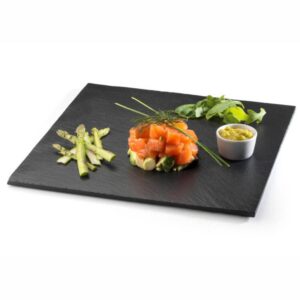In today’s fast-paced world, disposable food packaging has become an essential part of our daily lives. Whether you’re grabbing a quick meal on the go, ordering takeout, or packaging leftovers, disposable food containers offer convenience and practicality. However, the environmental impact of traditional disposable packaging has raised significant concerns. In this blog post, we’ll explore the latest innovations and trends in eco-friendly disposable packaging that aim to balance convenience with sustainability.
The Importance of Sustainable Disposable Food Packaging
Firstly, it’s important to understand why sustainable disposable food packaging matters:
- Environmental Impact: Traditional plastic packaging contributes to pollution and landfill waste.
- Consumer Demand: Increasing awareness and concern for the environment are driving consumers to seek eco-friendly options.
- Regulatory Pressure: Governments worldwide are implementing stricter regulations to reduce plastic waste.
Innovative Materials in Disposable Food Packaging
To address environmental concerns, companies are developing innovative materials for disposable food packaging:
- Biodegradable Plastics
- Made from natural materials like corn starch, biodegradable plastics break down more quickly than traditional plastics.
- These materials are ideal for single-use items such as cutlery, plates, and cups.
- Plant-Based Materials
- Packaging made from plant fibers like bamboo, sugarcane, and wheat straw is compostable and sustainable.
- These materials are sturdy and can be used for a variety of food packaging needs.
- Edible Packaging
- Edible packaging is a revolutionary concept where the packaging itself can be consumed along with the food.
- Examples include seaweed-based wrappers and rice paper.
- Recyclable and Compostable Paper
- Paper packaging made from recycled materials is easily recyclable and compostable.
- It is commonly used for food containers, bags, and wraps.
Trends in Disposable Food Packaging
Several trends are shaping the future of disposable packaging:
- Minimalist Design
- Minimalist packaging uses fewer materials and focuses on simplicity and functionality.
- This trend reduces waste and appeals to environmentally conscious consumers.
- Smart Packaging
- Smart packaging incorporates technology to improve food safety and extend shelf life.
- Features like QR codes provide information on sourcing, nutritional content, and recycling instructions.
- Customizable Packaging
- Customizable packaging allows businesses to create unique, branded packaging that stands out while being eco-friendly.
- This trend is particularly popular in the food delivery and takeout industry.
- Reusable Options
- Some companies are offering reusable packaging solutions that can be returned and reused.
- This model promotes a circular economy and reduces single-use waste.
Benefits of Eco-Friendly Disposable Packaging
Switching to eco-friendly disposable food packaging offers numerous benefits:
- Reduces Environmental Footprint: Eco-friendly packaging materials reduce pollution and waste.
- Meets Consumer Expectations: Consumers increasingly prefer brands that prioritize sustainability.
- Complies with Regulations: Staying ahead of regulations can prevent potential fines and enhance brand reputation.
- Enhances Brand Image: Eco-friendly practices can differentiate a brand and attract eco-conscious customers.
Challenges and Solutions
While eco-friendly disposable food packaging presents many advantages, there are challenges to consider:
- Cost: Sustainable materials can be more expensive than traditional plastics. However, economies of scale and increased demand are gradually reducing costs.
- Availability: Not all regions have easy access to innovative packaging materials. Building a robust supply chain can help mitigate this issue.
- Consumer Behavior: Educating consumers about the benefits of eco-friendly packaging is crucial for widespread adoption. Clear labeling and marketing campaigns can help.
Conclusion
In conclusion, the shift towards eco-friendly disposable food packaging is a positive step towards a more sustainable future. By embracing innovative materials and staying ahead of industry trends, businesses can reduce their environmental impact, meet consumer demand, and enhance their brand image. While challenges remain, the ongoing advancements in sustainable packaging technology and increased consumer awareness promise a greener future for disposable packaging.
As we move forward, the collaboration between manufacturers, businesses, and consumers will be key to making sustainable disposable food packaging the norm rather than the exception. So let’s embrace these changes and work together towards a cleaner, healthier planet.











